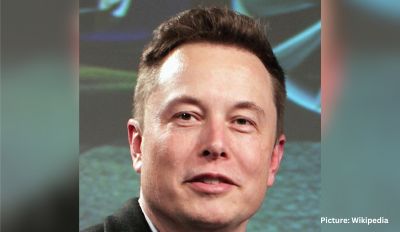Global electric vehicle (EV) sales are poised to increase by more than 20% this year, reaching 17 million, largely driven by the Chinese market, as outlined by the International Energy Agency (IEA). In a report released on Tuesday, the IEA anticipates a significant surge in EV demand over the next decade, reshaping the global automotive industry and notably reducing oil consumption for road transport. The agency projects that by 2035, half of all cars sold worldwide will be electric, up from just over 20% this year, provided that charging infrastructure keeps pace. The IEA defines EVs to include both battery electric vehicles and plug-in hybrid vehicles.
The IEA’s optimistic long-term outlook for EVs, contingent upon existing government policies, follows Tesla’s recent move to lower prices in major markets in response to declining sales and heightened competition from Chinese newcomers and established automakers. Fatih Birol, the IEA’s executive director, dismissed recent negative headlines about slowing EV penetration, asserting that the data reflects a robust increase in global electric car sales rather than a reversal of growth.
The growth in EV adoption isn’t solely attributable to Chinese consumers. The European Automobile Manufacturers’ Association reported nearly a 4% rise in new battery electric car sales in the European Union during the first quarter of this year compared to the same period in 2023. Birol emphasized that, instead of diminishing, the global EV revolution seems poised for a new phase of expansion.
Despite the promising trends, EV manufacturers are grappling with narrow profit margins due to intensified price wars amid escalating competition. Both Tesla and Chinese EV manufacturer Li Auto have recently slashed prices on key models in China, the world’s largest EV market, with Tesla also implementing price cuts in Germany and the United States. Tesla recorded its first annual sales drop in nearly four years earlier this month, with its stock plummeting over 40% since the beginning of the year. Similarly, China’s BYD faced setbacks after briefly surpassing Tesla as the global market leader, experiencing a decline in sales from over 525,000 in the final quarter of 2023 to about 300,000 in the first quarter of this year.
While automakers may feel the strain from price reductions, they play a crucial role in driving widespread EV adoption globally, according to the IEA, which underscores that the pace of transition to EVs depends on affordability. In China, where over 60% of EVs sold last year were cheaper than conventional cars, affordability remains a key factor. However, in Europe and the United States, new cars with internal combustion engines still boast lower average purchase prices. The IEA anticipates that intensifying market competition and advancements in battery technology will lead to reduced EV prices in the coming years. Moreover, the growing export of electric cars from Chinese automakers, which accounted for over half of all electric car sales in 2023, could further drive down purchase prices.
Chinese automakers dominated global electric car sales last year, commanding over 50% of the market share, despite having only a 10% share of the conventional car market. Birol noted that China has emerged as the de facto leader in electric car manufacturing worldwide. Concerns over the surge in imports of Chinese EVs prompted the European Union to launch an investigation late last year into China’s state support for EV manufacturers. The auto industry, a significant employer in Europe and vital to Germany’s economy, which is home to major manufacturers like Volkswagen, Audi, and BMW, underscores the importance of the issue.
China is expected to account for nearly 60% of global EV sales this year and approximately 45% of all car sales within the country. By 2030, almost one-third of cars on Chinese roads are projected to be electric, compared to less than one-tenth last year. In comparison, the IEA forecasts that electric cars will constitute 17% of vehicles in the United States and 18% in the European Union by 2030, up from just over 2% and nearly 4%, respectively, last year. Birol emphasized that this shift will have significant implications for both the auto industry and the energy sector, with the IEA predicting that global oil demand will peak in 2030, aided by the electrification of the transport sector.
In addition to affordability, the lack of public charging infrastructure in Europe and the United States poses another barrier to mass adoption of electric cars. Under current government policies, the IEA expects the number of public EV charging points worldwide to reach 15 million by the end of the decade, nearly quadrupling from last year.











